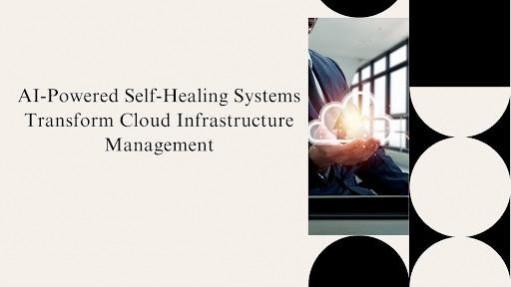
Technology researcher Saikiran Rallabandi from a leading tech firm in the USA has published groundbreaking research on how artificial intelligence is revolutionizing cloud infrastructure management through self-healing systems. This comprehensive study examines the theoretical foundations and practical implementations of autonomous system management.
Breaking New Ground in System Reliability
The integration of AI-driven self-healing capabilities in cloud infrastructure marks a revolutionary shift from traditional manual maintenance to autonomous operations. These sophisticated systems can now detect, diagnose, and resolve system faults without human intervention, achieving remarkable system availability rates of 99.9999% and reducing unexpected outages by 82%.
Digital Twins Lead the Way
Modern self-healing systems leverage digital twin technology paired with IoT sensors to create virtual replicas of physical infrastructure. This innovative approach enables real-time system monitoring and predictive maintenance, allowing organizations to identify and address potential failures before they impact operations. The integration of these technologies has led to a 94% accuracy rate in incident prediction, dramatically reducing system downtime.
Machine Learning at the Core
Advanced machine learning models form the backbone of these autonomous systems. Graph-based anomaly detection methods revolutionize how irregularities are identified, while hyperbolic neural networks process complex system relationships with unprecedented accuracy. This sophisticated approach has demonstrated a 78% improvement in preventing incidents compared to traditional methods.
Edge Computing Transforms Response Times
The emergence of edge computing capabilities has significantly enhanced the effectiveness of self-healing systems. By processing data closer to its source, these systems achieve response times under 80 milliseconds, enabling near-instantaneous reactions to potential system issues. The integration of 5G networks has further improved response times for IoT-based healing mechanisms by 94%.
Quantum Computing on the Horizon
The research reveals exciting developments in quantum computing applications for self-healing systems. Current quantum-inspired algorithms are already showing 20-30% improvements in scheduling efficiency for large-scale cloud deployments. The technology roadmap suggests that between 2024 and 2026, hybrid classical-quantum approaches will optimize resource allocation and workload distribution even further.
Economic Impact
The financial benefits of implementing self-healing infrastructure are substantial, with organizations reporting more than 50% reduction in operational expenses. This significant cost saving comes from decreased human intervention requirements, improved resource utilization, and reduced incident-related expenses. The technology has also demonstrated impressive returns through energy consumption optimization and more efficient resource management.
Future Prospects
The convergence of advanced language models and edge computing is set to further transform self-healing capabilities. Zero-shot learning abilities are reducing the need for manual configuration, while automated code generation is reaching new levels of sophistication. These developments suggest a future where infrastructure management becomes increasingly autonomous, with human intervention required only for high-level strategic decisions.
The Human Element
Despite the move toward automation, the research emphasizes the importance of human expertise in implementing and overseeing these systems. Organizations must invest in developing technical proficiency across domains, including complex analysis understanding and data quality management. The success of self-healing systems depends on careful attention to change management and stakeholder alignment.
Looking Ahead
As the technology continues to mature, the next frontier includes the integration of quantum computing capabilities, enhanced edge security measures, and more sophisticated predictive maintenance algorithms. These advancements promise to further revolutionize how organizations manage their cloud infrastructure, with projected adoption rates reaching 95% for quantum integration by 2030.
The research conducted by SaiKiran Rallabandi demonstrates that self-healing infrastructure is no longer just an operational enhancement but has become a fundamental requirement for managing modern cloud environments. As these systems continue to evolve, they will play an increasingly crucial role in shaping the future of technology operations, particularly as quantum computing capabilities mature and enable even more sophisticated autonomous management solutions.

















![OnePlus 15R vs OnePlus 15: What's changed [Detailed Comparison]](https://data1.ibtimes.co.in/en/full/825978/oneplus-15r-vs-oneplus-15-whats-changed-detailed-comparison.jpg?w=220&h=135)